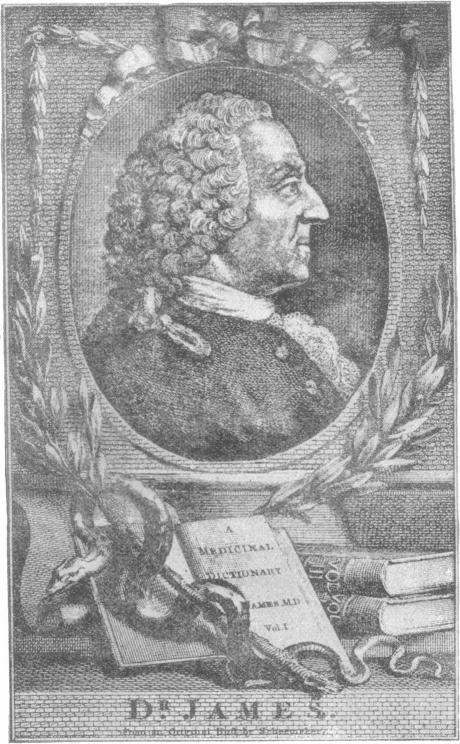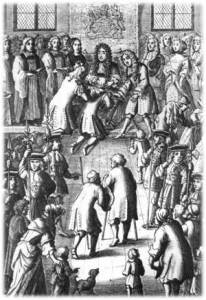As we start to see light at the end of this long Covid tunnel, thanks to the new vaccines on the horizon, we thought we’d bring you the story of a book about rabies, another disease in which vaccination has been effective. Like the new Covid vaccines, it also has to be given in several doses to be fully effective. Before the use of the vaccine, though, physicians and apothecaries turned to a common garden plant to help cure the condition.
A Treatise on Canine Madness, was published by the Staffordshire physician Robert James in 1760. One person who consulted Robert James was Lichfield physician Sir John Floyer who we’ve featured on this blog before. Sir John had several hounds infected, which caused him great distress.
In terms of his two-legged patients James offers a story of a young man who worked as a servant for a Mr Vernon from Austrey . In December 1734, aged 18, the lad had been attacked by a rabid dog, receiving a bite to his hand. The dog also wounded several other dogs. James tell us that
About six days after the mischief was done, several dogs that had been wounded ran mad; upon which he [the patient] applied himself to Mr. Wilson, apothecary in Tamworth, to whom I had communicated the success of the Turpeth in this case. (p. 115)
The young man was suffering from tremors, insomnia, and melancholy by the time he visited his local apothecary, doubtless brought on by the anxiety he reported feeling at knowing the dogs that were bitten at the same time as himself had gone mad. Mr Wilson promptly ‘vomited’ the young man, by giving him the emetic ‘antimonial wine’.
He was sent home with boluses – small balls of medicinal ingredients mixed with Venice treacle to hold them together – containing turpeth and advised to take three of them each night. These were washed down with a cordial and some caster oil. Unsurprisingly, given the number of these medicaments which had laxative properties, the man was soon running for the pot and shivering. He reported sleeping much better straight away, however. In addition to the medicine, the lad was given a cold bath every morning for five days. After his fourth bath, the scab from the bite on the back of his hand broke and Mr Wilson observed that it oozed ‘thick matter’ (p. 123).
Following this regime and also avoiding ‘salt meat’ and ‘spirituous liquors’ and sticking to puddings instead, the young man’s wound soon healed and he made a perfect recovery from his ordeal. Mr Wilson’s testimony to Robert James from Tamworth is dated 9 April 1735.

https://en.wikipedia.org/wiki/Robert_James_(physician)
Robert James was a believer in the use of turpeth for rabies and included testimonials from people such as Sir John who had seen this treatment work in his own fox hounds.
Turpeth belongs to the ‘morning glory’ plant family, the invasive plants more commonly known as bindweeds. As someone who spends a large part of my summer wrestling with this plant, it is quite nice to see it used for good, but it’s not a cure we should try ourselves without medical supervision.







One thought on “Mad Dogs and Bindweed Cures.”
Comments are closed.